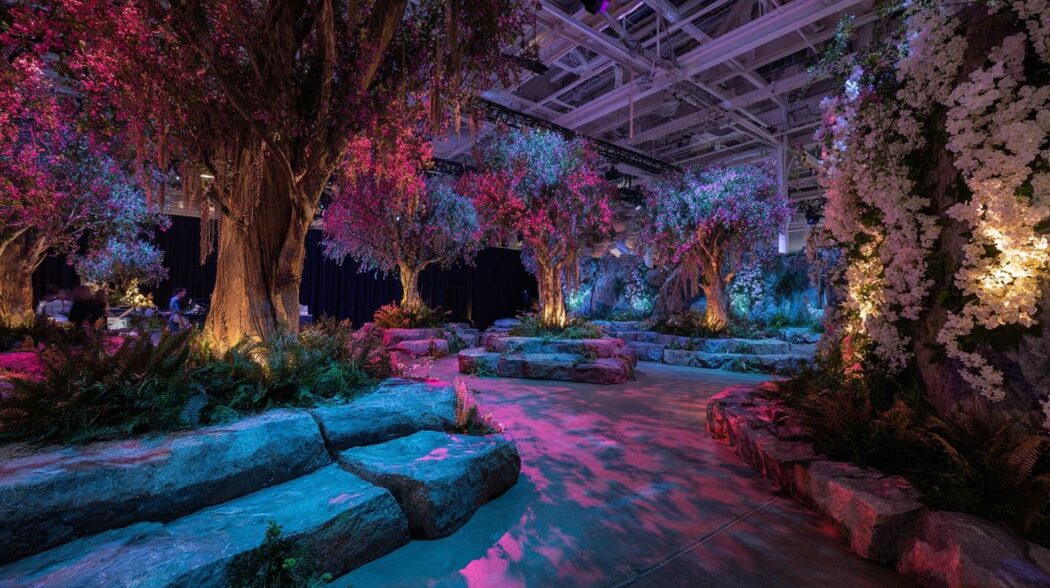In the past, creativity often existed in silos: graphic designers had their screens, musicians had their stages, and writers had their books. But today, something exciting is happening — boundaries are blurring, and creative expression is spilling over into unexpected places. One of the most powerful frontiers in this movement? Immersive event design.
From backyard installations to full-scale theme parties, creatives are no longer content to stay behind the scenes. They’re stepping into the role of experience architects, crafting moments that audiences don’t just watch — they live.
Whether it’s an elaborate fan celebration, a branded pop-up experience, or a grassroots festival like Weapons of Mass Creation Fest itself, immersive events are becoming a canvas for modern creators to tell stories in real time, in real space, and with real impact.
Let’s explore how this shift is empowering designers, performers, makers, and storytellers — and what it means for the future of creativity.
Experience Is the New Medium
We live in a time where attention is fleeting and screens are crowded. In this digital landscape, the most memorable content isn’t just consumed — it’s experienced. That’s why immersive design is exploding.

But it’s not about bigger budgets or tech gimmicks. It’s about intentional storytelling, where every visual, sound, scent, texture, and taste contributes to a cohesive narrative. It’s design thinking, turned three-dimensional.
Imagine:
- A Harry Potter-themed birthday party where the desserts look like potions and guests get sorted into houses upon entry.
- A folk concert where the stage is set in a reconstructed 1800s general store.
- A branding launch that transforms an abandoned warehouse into an “urban jungle” with projection mapping and live soundscapes.
These aren’t just parties or campaigns. They’re immersive stories — and creatives are becoming the directors.
What Makes an Immersive Event “Work”?
Great immersive experiences rely on the same fundamentals as any good design: intention, detail, and emotional connection. But in this context, you’re designing not just for sight and sound — you’re designing for presence.
Here are the core elements that define successful immersive event design:
1. A Strong Narrative Anchor
Every element should serve the central story. Whether it’s fantasy, nostalgia, rebellion, or elegance, the theme must be more than visual — it must emotionally resonate. Great events feel like you’ve walked into a story that’s been waiting for you.
2. Multi-Sensory Design
It’s not just about how things look. How does the space smell? What music is playing? Can guests touch or taste something that deepens the theme? This is where designers, musicians, chefs, and crafters get to collaborate in a whole new way.
3. Interactivity
People love to feel involved. Activities like themed stations, DIY crafts, or live storytelling moments turn attendees into participants, not just spectators. From DIY bloggers to large-scale creatives, the inspiration is endless. One standout is At Home with Sweet T, who crafts deeply themed party experiences that blend storytelling with décor, games, and food. Her Harry Potter food guide is a masterclass in attention to detail — proving you don’t need a huge budget to cast a spell on your guests.
Creatives like this remind us that event design is both high art and heartfelt hospitality — and it’s never been more accessible.
4. Surprise and Delight
The unexpected creates memory. It could be a costumed actor breaking character to offer a heartfelt toast, or an LED effect triggered by someone completing a challenge. Surprise moments create buzz and deepen immersion.
Why This Matters for Creatives
Immersive event design isn’t just about entertaining people. It’s a powerful tool for creative self-expression, connection, and professional growth.

Here’s how:
→ It Allows Cross-Disciplinary Collaboration
Designers team up with chefs. Musicians work with lighting artists. Makers bring in theater kids. Events are where art forms collide — and incredible innovation happens when they do.
→ It Turns Creative Work into Physical Impact
Digital portfolios are great, but nothing compares to watching someone interact with your work in real time. The emotion, the energy, the immediate feedback — it’s transformative.
→ It Builds Community
Experiences are shared. They build belonging. Whether you’re hosting a zine-making night, an indie concert, or a neighborhood storytelling circle, immersive events are magnets for like-minded humans.
→ It Creates Income Streams
For many creatives, immersive events open up new revenue. Designing props, setting up activations, offering themed catering, even renting decor — it’s a business model that rewards artistic vision and logistical skill in equal measure.
Tips for Creators Starting Out
If you’re a creative curious about event design, you don’t need a warehouse or Hollywood team. You just need vision, planning, and collaborators. Here’s how to begin:
- Start with a story, not a product list. What do you want people to feel?
- Choose one or two key experiences — don’t try to do everything.
- Lean into what you love — whether it’s food styling, visual aesthetics, soundscapes, or handmade crafts.
- Test with small audiences: a birthday party, a backyard dinner, a book club gathering.
- Document the experience with photography or video — it helps build your portfolio and inspire others.
The key is to start small but start strong. Every detail matters — and every guest becomes a walking ambassador for your story.
Conclusion: Welcome to the Age of Living Design
As creators, we’re constantly seeking new mediums. Event design isn’t just a new medium — it’s a new dimension. It’s the evolution of visual storytelling into shared, felt, lived experience.
At Weapons of Mass Creation Fest, we’ve always believed in breaking boundaries and elevating creators of all stripes. Immersive events represent everything we stand for: collaboration, emotion, narrative, and fearless experimentation.
So the next time you’re designing something — a poster, a logo, a song — ask yourself: what if this was a room? A world? An experience?
The answers might surprise you.
